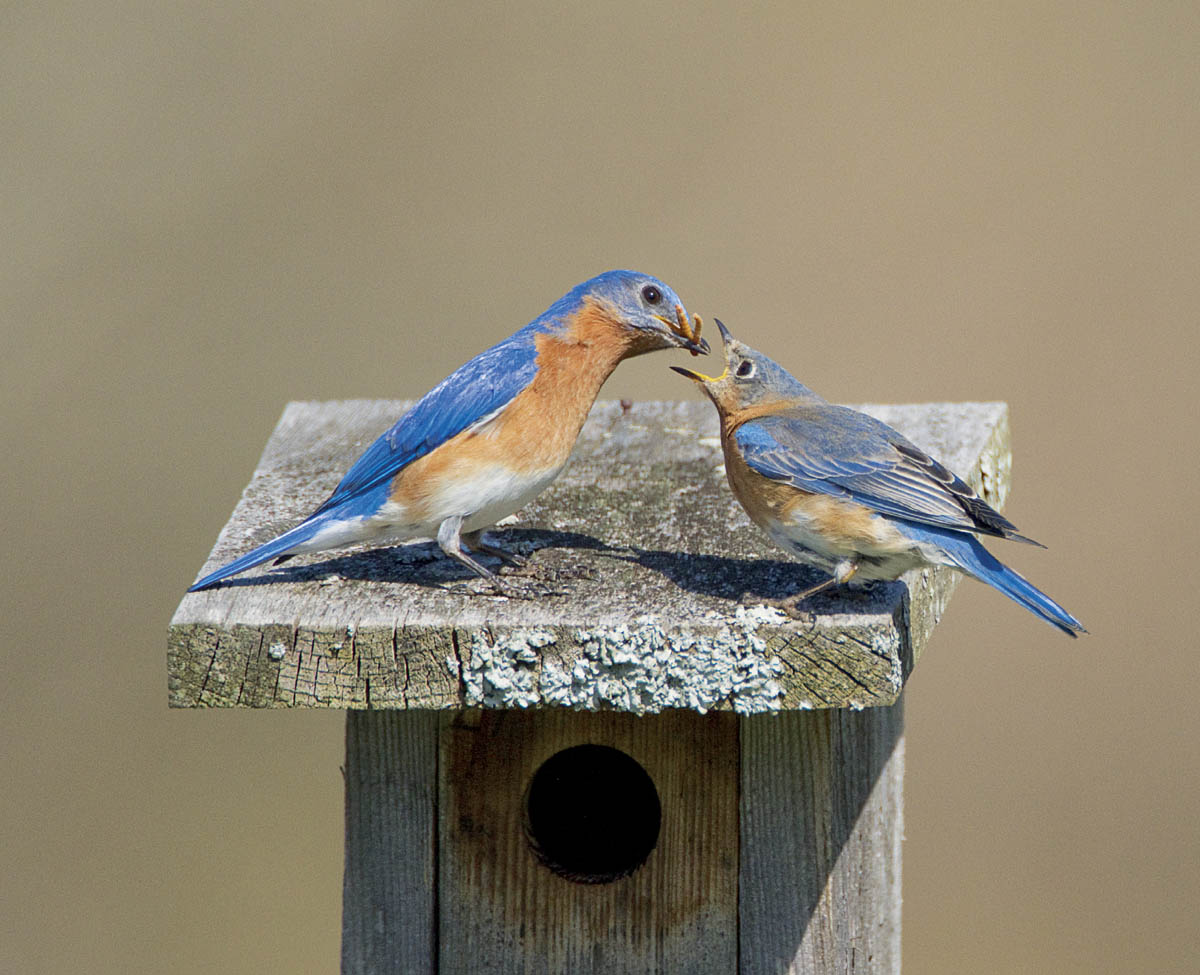
Eastern Bluebird pair
Selecting the right mate is fundamental to a bird’s success in keeping its genes alive. Gaudy plumage, healthy feathers, lively singing, and energetic courtship displays play a role in helping females identify the strongest, healthiest males and, in some species, the best potential co-parents. Females often don’t display obvious (to human eyes) signals of fitness, but a female’s responses to a male’s advances help him see how healthy she is and how well she’ll raise young.

Eastern Bluebird pair
The fittest male hummingbirds mate with several females. Producing sperm is simpler and less physically taxing than producing eggs, so males may be less concerned than females about the fitness of a potential partner.
In other species, monogamy (one male paired to one female) is the norm. Male crows, swans, and geese commit for life to one mate, and so are as motivated as females to select the fittest mate available. In many species where pairs mate for life, the plumage of both sexes is identical, at least to our eyes.
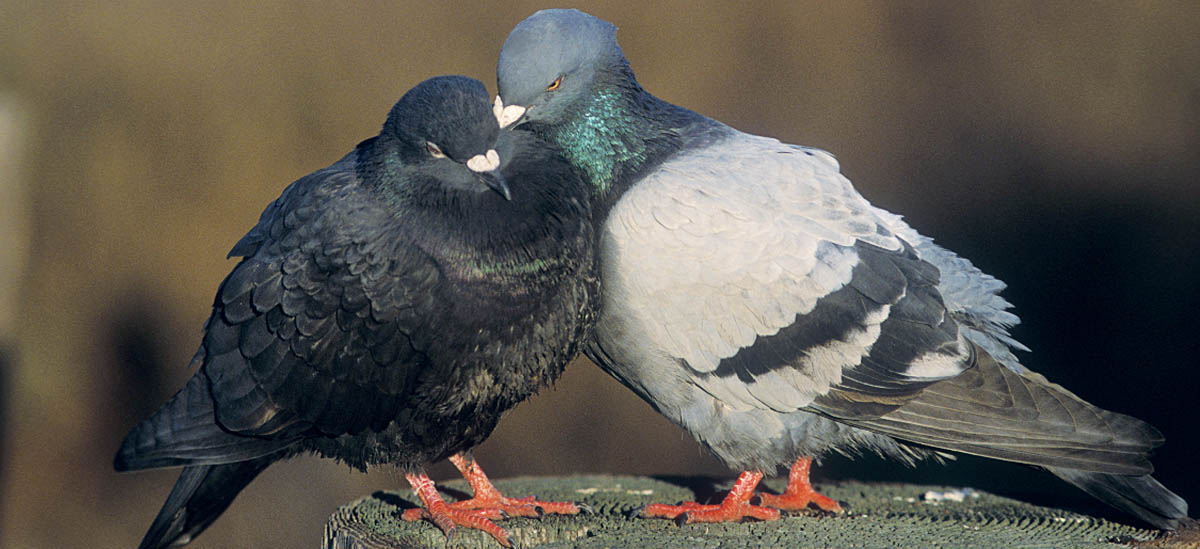
In many species, such as owls, parrots, and these Rock Pigeons, preening the mate is an important part of courtship. This behavior, called allopreening, can help strengthen the bond between the male and female and synchronize them physiologically for breeding.
Far more species are serial monogamists. These birds pair for a single breeding season or raise one brood together and then find new mates to raise another brood that same season.
In the far north, where summer is brief, Bald Eagles must find a mate that will be physiologically synchronized with them almost as soon as they arrive on territory in spring. They must have enough time to produce fertile eggs and raise the young.
Rather than advertising a territory, as do wrens, robins, and blackbirds, birds of this species invest weeks, months, or even years in choosing a mate. Once they commit, they can count on that mate as long as they both survive. Those that remain together throughout winter start courtship behaviors during migration, so both birds will be ready for reproduction soon after they arrive.
Few eagle pairs remain together during winter, but both adults return faithfully to the same territory and nest every spring. Dramatic courtship flights and more practical behaviors, such as repairing the nest, help cement their bond and synchronize their hormonal levels. By returning to the same nest year after year, they don’t need to rebuild from scratch.
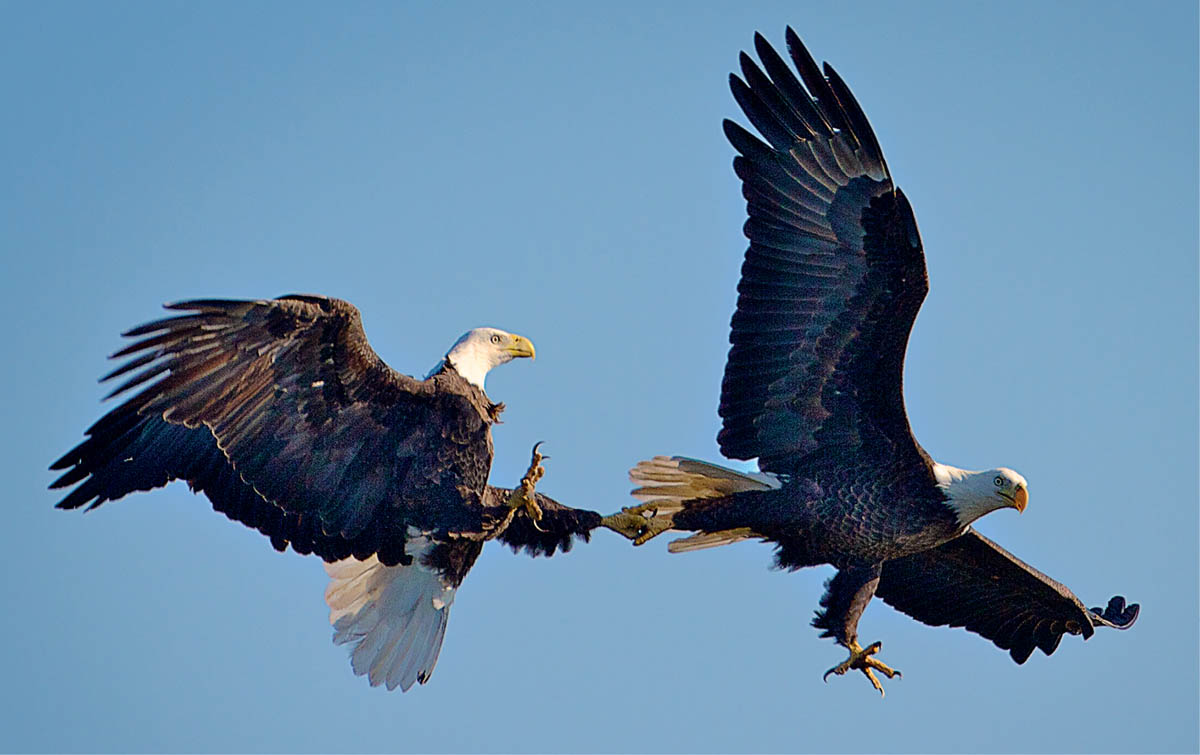
Sky dancing, performed here by a pair of Bald Eagles, is an essential aspect of courtship, synchronizing hormonal levels.
Whether birds mate for life depends partly on whether both can survive the winter and find each other the following breeding season. The oldest known wild Bald Eagle survived more than 32 years, the oldest known wild Whooping Crane lived to be 28, and one Mourning Dove wearing a U.S. Fish and Wildlife Service leg band survived for more than 30 years. Even tiny birds can have surprisingly long lives: Black-capped Chickadees have lived longer than 11 years, and one miniscule Broad-tailed Hummingbird banded in Colorado was re-trapped, alive and healthy, 12 years later.
Despite their potential longevity, the overall mortality rate for many of these small birds is high, and most songbirds and hummingbirds cannot plan on their mate returning year after year. Some songbirds, such as American Crows and Florida Scrub-Jays, mate for life, often remaining on the same territory year-round. Only if their mate dies do they search for a replacement.
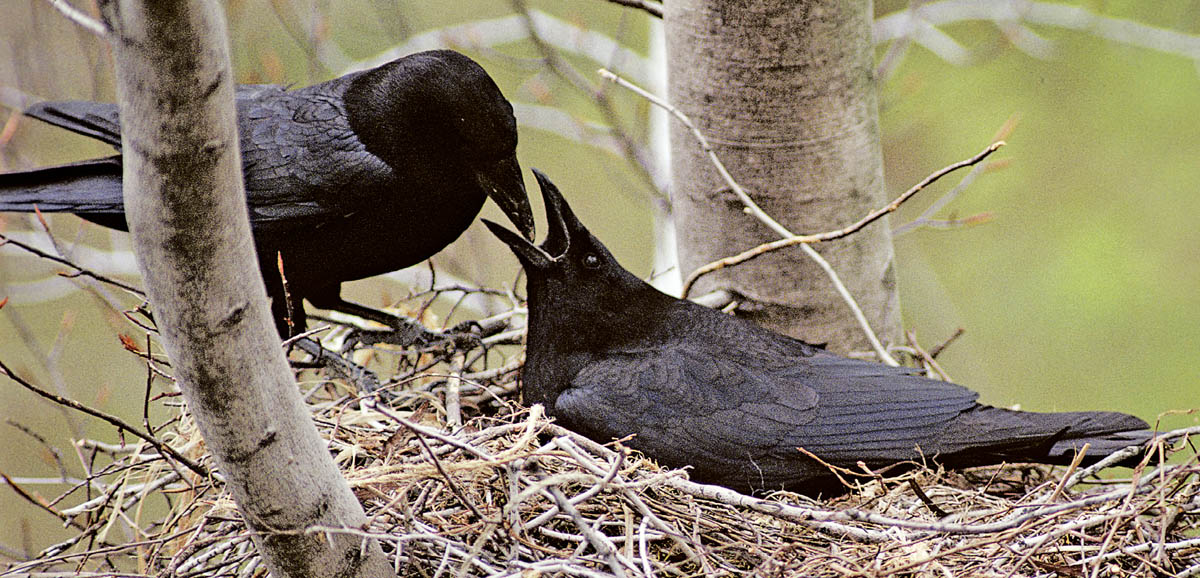
American Crows seem steadfast: they mate for life and often stay year-round on the same territory. They also build a community, maintaining relations with their young and neighbors throughout their lives.
Pairs of many songbirds, such as robins, remain together throughout a whole nesting season, raising two or more broods of chicks. Either or both adults may return to the same or a nearby territory the following year, but neither seems to expect to see their previous mate again; birds of these species often select a new mate each year.
Some species form shorter bonds. A pair of House Wrens raises one batch of young until the chicks leave the nest. After that, one parent, often the female, moves to another territory with a new mate while the remaining parent, often the male, continues to feed and care for the still-dependent fledglings as he attracts a new mate. By splitting up like this, wrens may maximize the number of young produced by both over the course of the summer.
Some birds form very weak or brief attachments with mates. Many male ducks remain with their mates only until the females start incubating or until the eggs hatch. Male grouse and woodcocks display to attract as many females as they can. After mating, the females go off and nest without any assistance.
Each species uses a unique repertoire of cues to evaluate potential mates. For example:
A male chickadee that sings frequently in midwinter demonstrates his ability to get everything he needs with time and energy to spare.
A mockingbird with many mimicked sounds in his repertoire proves he can learn well and has survived a wide variety of situations, and so should survive new challenges in the future.
A hummingbird with powerful and persistent flight displays is strong and focused. He won’t help raise young, but if his mate nests near his territory, she benefits from his vigorous defense of nearby nectar-bearing flowers, reducing her time away from the nest.
A robin or blackbird’s high-quality territory is a good guarantee that chicks will thrive on rich food and shelter resources.
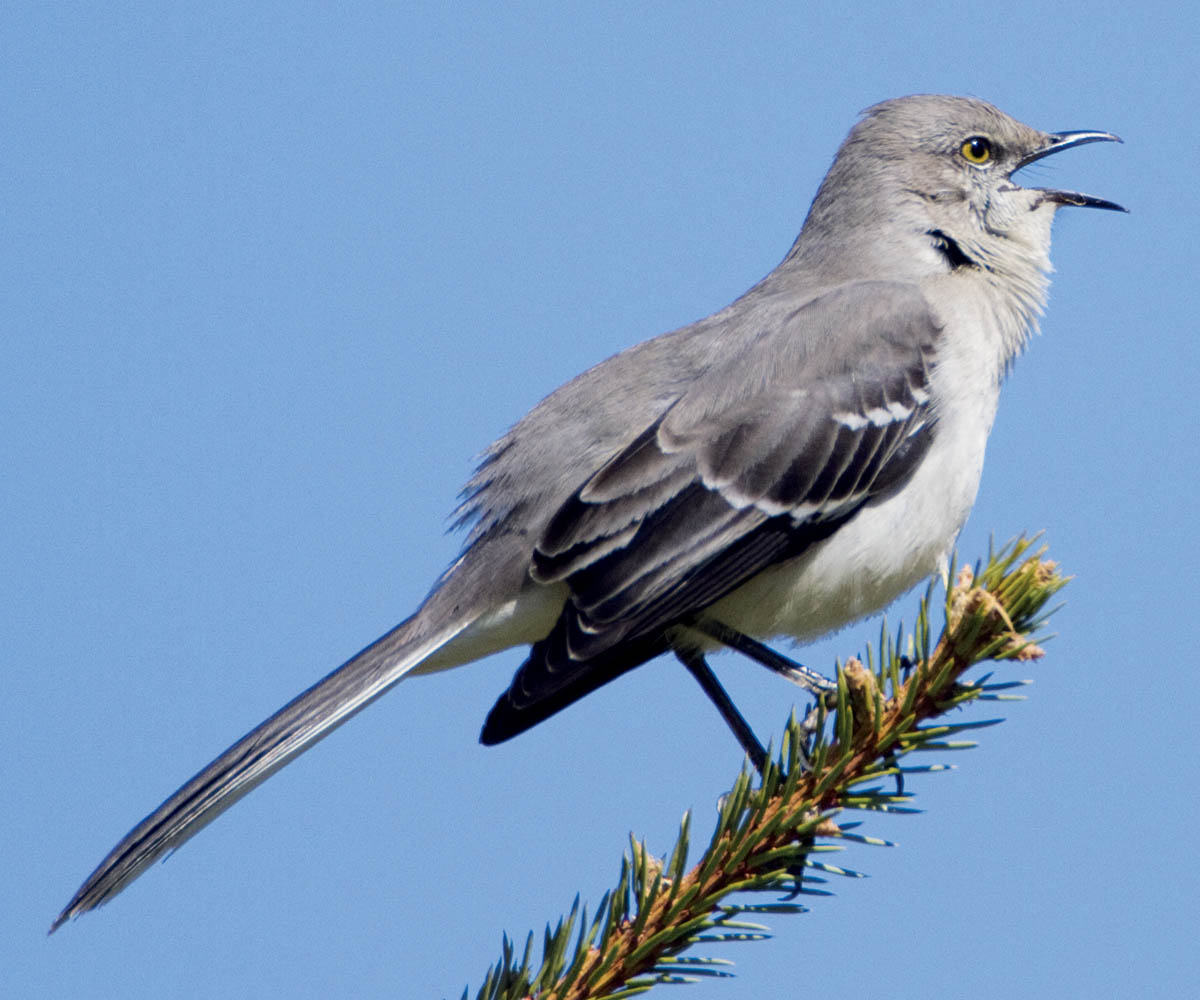
Northern Mockingbird